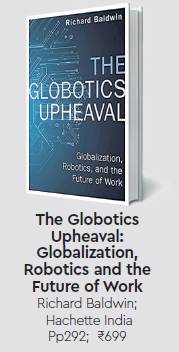An Oxford study, in 2017, found that developed countries are set to lose over 45% jobs to automation. Another one set the figure at 50%. The fact that there would be wide-scale unemployment with the onset of the fourth industrial revolution is a forgone conclusion, but what kind of jobs will be lost is the main point of contention.
Some economists highlight that the future may not be so different from the present, and all that may change is the nature of work. So, while jobs will still be lost, like the last revolution, technology will change the nature of work and, in turn, provide for more employment. Although that is true of the computer age, what many do not take into account is that machines, then, could not reason. Computers did require a human supervisor; artificial intelligence doesn’t. The fourth industrial revolution is expected to render large swathes of labour, both white- and blue-collar, obsolete. This is not so different from what Marx predicted as the idea of dead labour taking over the living; what he could not emphasise on was the change that it would bring about.
Richard Baldwin, in his book The Globotics upheaval: Globalization, Robotics and the Future of Work, carries forward this body of work combining the effects of the fourth industrial revolution with globalisation. Baldwin argues that unlike the last revolution, technology would not only impact the blue-collar worker but also take away white-collar jobs. But a significant emphasis of Baldwin’s work is on the ensuing globalisation. The author argues that processes like telemigration and holoportation will change the future of work and make companies genuinely multinational.





Using these technologies, a person in Mumbai will be able to coordinate for work with a person in Paris, and New York from the comforts of his office. The book is divided into two sections. The first part details the history of technology and globalisation in the context of work. The second, with eight chapters, describes the future of work. It is here that Baldwin goes into the details on phenomenons like telemigration and holoportation. Holoportation will create a hologram of the person, with which she’ll be able to communicate with her colleagues from around the world.
Baldwin takes great care in detailing the future of work, and how we can adapt to this and keep ourselves relevant.
“Technology and more internationally open markets can produce outcomes that are good and ghastly. It is mostly a matter of speed. The past provides important clues on how we can make the outcomes good and avoid having them get ghastly, so a quick recap of the historical experience is useful,” he says. Ultimately, Baldwin believes that the pace of progress needs to be set by humans, and as technology is moving too fast, we need to control the speed of disruption.
As intuitive as Baldwin is about the future, the book is only focused on the future of work, and not how society may evolve with this ‘impending’ future. Baldwin does not stress much upon topics like basic income, transfer schemes and the role of government. He does elaborate on society, but those are more learnings from the past kind of elucidations.
More critical, Baldwin does not say how jobs may change as technology evolves. He does present a view of the future. The work starts to feel like a sci-fi version with ideas like holoportation. Although he does provide a fresher perspective of the future, a lot of these assumptions can be contentious. For one, with technology evolving, work would not just be transferred to developing economies but may be done away with altogether.
As far as emerging economies like India are concerned, they would not be able to take advantage of their demographic dividend, as they would have no choice but to automate or lose out to the rest of the world.
As David Ricardo, a 19th-century economist, contends that even if one was to ignore technology in favour of labour, other nations or companies might adopt that innovation, ultimately leading to a pan-world adoption of it owing to competitiveness.


















